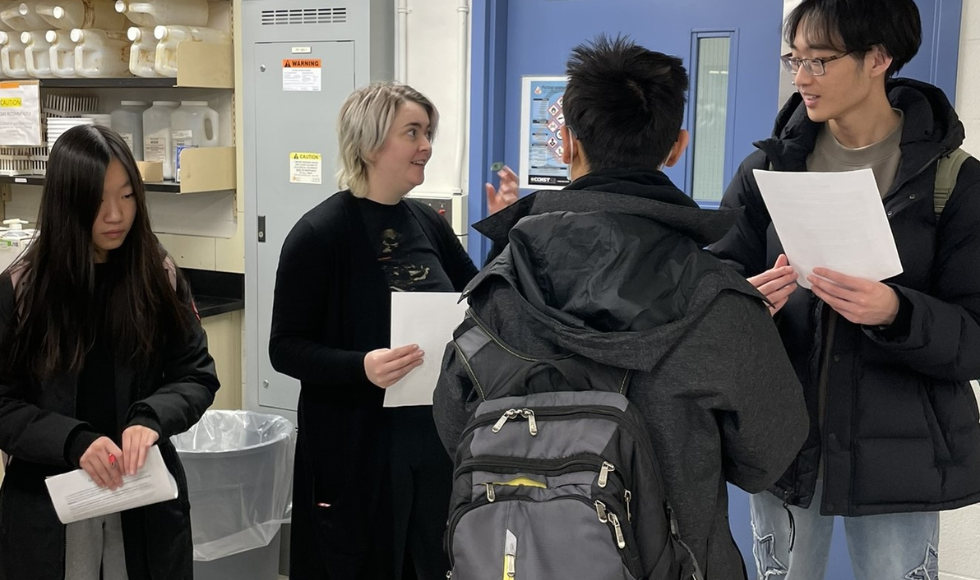‘Meet the Groups’ connects undergrads with researchers

Doctoral student Kay McCallum pitched the idea of bringing undergraduate students together with research groups in the Department of Chemistry & Chemical Biology.
Doctoral student Kay McCallum jumped at the chance to play matchmaker in the department of Chemistry and Chemical Biology.
A survey led by the department’s equity, diversity and inclusion committee revealed a need to create an easier, efficient and equitable way to connect undergrads with research groups.
Faculty members were inundated year-round with emails from undergrads asking about research opportunities. Meanwhile, undergrads said they didn’t know what opportunities were available, and how, when or even if they should approach faculty.
“Welcoming undergrads into research groups is a priority for faculty and graduate students in our department,” says McCallum. “So if undergrads with lots of potential and an interest in research weren’t connecting with these opportunities, then something clearly wasn’t working and needed fixing.”
McCallum, who serves on the department’s EDI committee, pitched a Meet the Groups event, modelled after visiting students weekend at the University of Alberta, where they went to graduate school
That’s where McCallum met environmental chemist Sarah Styler, who became their supervisor. When Styler was hired at McMaster, McCallum followed her here.
At Meet the Groups, undergrads first meet with graduate students for informal — and PowerPoint-free — conversations. They learn about about the vibe in the grad students’ research groups and learn upfront if there are summer jobs, semester classes and 4th year thesis projects available.
If there’s a match, undergrads then meet one-on-one with faculty members the following week to explore opportunities.
This year’s Meet the Groups, held in one of the department’s largest undergraduate chemistry labs in the Arthur Bourns Building, drew 91 undergrads, along with dozens of grad students from 18 research groups.
That initial get-together led to just over 100 one-on-one appointments with faculty members the following week. All those appointments were booked by the volunteer committee running Meet the Groups.
Second-year students Sereena Sodhi and Alexandra Mancini were among the undergrads who lined up down the hallway before doors opened at 11:30 a.m. for the event.
“Every grad student I talked with was so knowledgeable and passionate about their lab groups,” says Sodhi. “It really streamlined the process of reaching out to professors and made it a lot less daunting.”
Mancini agreed. “It was an amazing opportunity. The grad students were incredibly nice and super informative. The Chemistry and Chemical biology department does so much for their students by organizing events like this.”
Both students signed up to meet with faculty. Topping their wish list? Joining assistant professor Katherine Bujold’s research group.
So what’s McCallum’s advice for other departments and schools interested in running their own Meet the Groups?
“Everyone needs to buy in right from the start. Your chair or director needs to champion the event. Faculty and grad students need to be thoroughly invested. And undergrads need to show up.”
Keep the event close to home and in a familiar place, they say. “While grad students can leave their research groups to spare a few hours meeting with undergrads, they likely don’t have the time to trek across campus.”
It also helps to have an outstanding core team of volunteers planning, promoting and running the event, says McCallum. “In our department, Meet the Groups is an event for students by students, with a ton of support from faculty and admin staff in the Chair’s office. It’s very much a collaborative team effort.”
And order a lot of pizza. “Free food’s guaranteed to draw a crowd every time.”


